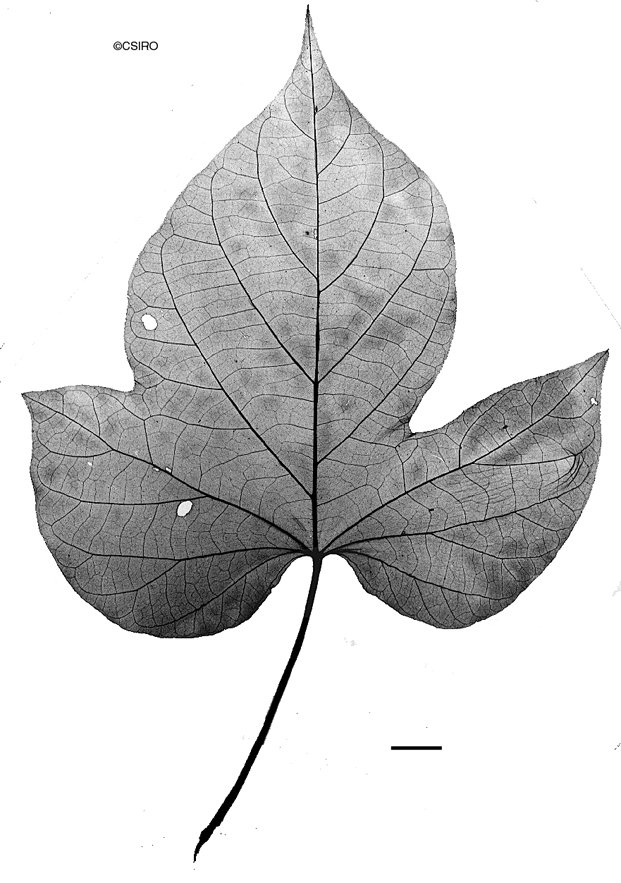Australian Tropical Rainforest Plants - Online edition
Ipomoea indica (Burm.) Merr.





Merrill, E.D. (1917) An Interpretation of Rumphius's Herbarium Amboinense : 445.
Blue Morning Glory; Common Morning Glory; Tall Morning-glory; Oceanblue Morning-glory; Blue Dawn Flower; Perennial Morning Glory; Purple-Flowered Bell Vine; Vine, Purple-Flowered Bell; Purple-Flowered Morning glory
A slender vine not exceeding a stem diameter of 2 cm.
Flowers borne in a densely packed panicle on a peduncle about 10-20 cm long. Pedicels about 10-15 mm long, each with a leafy bract about 20-30 x 5 mm. Calyx lobes (sepals) lanceolate, about 25-30 x 5-12 mm. Inner sepals narrower than the outer. Corolla trumpet-shaped, about 45-50 x 50-60 mm, mauve to bluish-mauve in the upper portion while the tube is white or cream. Stamens attached to the lowermost one third of the tube. Staminal filaments about 35-40 mm long. Anthers about 5 mm long. Ovary about 1-1.5 x 1-1.5 mm, surrounded by a cream disk about 1 mm high. Ovary 3-locular with 2 ovules in each locule. Style about 13-15 mm long. Stigma 3-lobed.
Features not available.
Features not available.
An introduced species with a pantropic distribution, now naturalised in NEQ, CEQ and southwards as far as coastal central New South Wales. Recorded from CYP. Altitudinal range in northern Australia from near sea level to 900 m. Usually grows as a weed of waste places but also occurs on rain forest margins.
This species may have medicinal properties. (http://squid2.laughingsquid.net/hosts/herbweb.com /herbage/A13928.htm)





